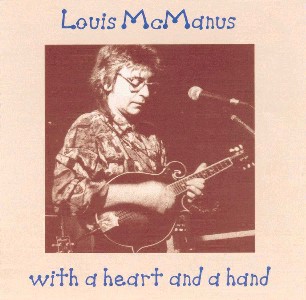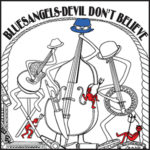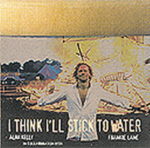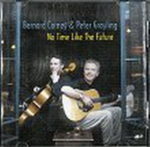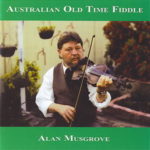Description
With a heart and a hand is a compilation of performances by Louis spanning almost 25 years. It was produced by his wife Max, aided by friends and colleagues, following his second stroke in 1998, which forced him to abandon plans for a solo CD. There are appearances at clubs and festivals and odd tracks recorded in studios, some at the ABC (Australian Broadcasting Corporation). Although the disc is really a scrapbook, Louis’ technical brilliance and sense of musical fun shine through very strongly.
From the CD liner notes: Louis McManus is, in my view, one of the great musicians alive today, and there are several good reasons for thinking so. A blotting paper memory, a great sense of humour (musical and otherwise) and, much more unusually, a fabulous intuition fed by his firm roots in the Irish fiddle music taught initially to him by his father, but which he allows to take him anywhere he musically fancies. One by-product is the galvanising effect which he has on those musicians who are lucky enough to play with him. It’s not always an easy ride, because hallmarks of his playing are risk and daring, but the end result can be electrifying. He’s an inspiring bloke to be around, as I discovered personally in Australia in 1989 when the Perth Festival arranged a shotgun wedding for the two of us for two gigs. The result lives in my memory. – Martin Carthy
Louis McManus – With a Heart and a Hand
Here is a track-by-track review.
Track 1, The Swedish Jig, is from a 1989 gig in Fremantle that Louis played with Martin Carthy, the doyen of English folk performers. According to Carthy it was a “shotgun wedding” arranged by Perth folk festival, by which I assume they had next to no time to rehearse. Louis plays mandolin, very ably accompanied by Carthy, whose chunky, bassy, open-tuned chords add considerably to the excitement you can feel building through the tune as Louis pulls out all the stops; Carthy cannot contain his delight at the variations and surprises. Lovely stuff.
Track 2, Farewell to Ireland, is a fiddle solo by Louis, recorded at the same Fremantle performance. Louis gives a fine performance of this classic Irish reel and gives us Rakish Paddy for good measure.
Track 3, The Gold Ring / The Hag at the Churn is another live recording, in Melbourne this time, in 1994. Louis is again playing mandolin, with Steve Cooney on guitar, Mairead Nesbit on fiddle, and my old Poteen band-mate Simon Melia on melodeon. (Simon died the same year at the age of 37.) From the lineup I would guess that rehearsal time for this gig was also minimal, or that if there were any rehearsals, more time would have been spent laughing than playing.
The set begins with an electrifying duet between Louis and Steve on The Gold Ring (not the 6 or 7-part jig you most often hear, but a related 4-parter). Louis’ mandolin playing is dazzling, and Steve follows and responds to his every move. It makes you wonder what would have happened had these two gone into the studio together (to make their own record, as opposed to those on which they both played sessions).
Having played the tune they slip into a nice groove, laying the groundwork for the other instruments to weigh in with Hag at the Churn, during which Louis switches mainly to accompaniment, matching and complementing Steve’s powerful rhythmic playing in a higher register. MP3 clip: 940K 75K
Track 4, Paddy Fahy’s Jig, is from the same performance. It is misnamed: Mairead Nesbit plays Paddy Fahy’s reel nicely and languidly with some obligato mandolin rippling from Louis before Simon kicks in to take the tempo up several notches with Man of the House. Louis plays melody with the box and fiddle for a couple of turns before slipping in and out of an accompaniment role. Some lovely moments.
Track 5, Ragtime Annie / Drowsy Maggie, is a live performance recorded at Geelong Folk Festival in 1978, when Louis was about 22. Accompanied by Pete Howell on double bass and Geoff Hollings on guitar, Louis flatpicks his way through these two standards with a combination of supreme virtuosity and inventiveness that will leave anyone in awe – especially guitar pickers! Playing is as easy as breathing for Louis, and his relaxed state is made clear by his humorous little falsetto “hoo!” signals to the other musicians. MP3 clip: 416K 73K
Track 6, Cracked Pitcher, is a pop song by Reg Mombassa, whose colourful paintings adorn the liner notes. No clue is given as to when and for what project this eccentric (Afro-Caribbean?) love song was recorded. Louis plays guitar and shares the vocals with his younger brother Antony.
Track 7 is a set of reels played by Louis on fiddle, accompanied by Boris Conley on piano. According to the liner they are Rakish Paddy / The Scholar / Jenny’s Chickens, but in fact the set starts with The Bank of Ireland and then goes into the familiar Michael Coleman set, Tarbolton / Longford Collector /Sailor’s Bonnet. Nice straightforward traditional playing.
Track 8, Roisin Dubh / Rhil na Max is one of the album’s many highlights. How many mandolinists would dare attempt a slow air like Roisin Dubh? And – more to the point – how many of them would you want to listen to? Louis pulls it off superbly, with just the right combination of force and lyricism, accompanying himself in an understated manner on guitar.
I am quite sure that the air (“The little dark rose”) is intended as a tribute to Louis’ wife Max, an Australian Aboriginal: the title of the second tune, a reel composed by Louis, makes it certain. It is a fine, lonesome reel, and Louis plays it five or six times, at first on mandolin and banjo, later chiming in with fiddle, bass and assorted percussion (although she is not credited, I wouldn’t be surprised if it were Max herself thumping various objects). It ends up somewhat over-busy – one feels that Louis, a very able record producer himself, could have benefited from a producer’s restraining hand here, although it is probably a home recording, and the exuberance makes me smile rather than frown.
Track 9, O’Carolan’s Concerto, is one of three tracks on the CD that were recorded by David Mulhallen of ABC Radio in 1980. These are little jewels, capturing Louis at a time when, I feel, he was probably at his absolute peak physically and musically. This track is played on two mandolins, one playing the melody with admirable delicacy, the other adding harmony. The harmony line varies constantly. This is typical of Louis, and I would be very surprised if he worked out exactly what he was going to play before making the recording. He had a genius – no other word will do – for spontaneous harmonization.
Track 10, The Blackbird, again comes from the Fremantle gig with Louis on mandolin and Martin Carthy on guitar. A beautiful rendition of this classic set-dance tune. Louis cites the Galway fiddler Martin Byrnes (along with his father and grandfather) as influences on his music, and I fancy I can hear some Byrnes touches in this performance. (It was Martin Byrnes’ soulful playing of this same tune that sparked my own fascination with Irish fiddle music.)
Track 11, $50 Blues. Louis co-wrote this second of the two songs on the CD and sings it alone, playing guitar and tenor banjo. It is the laconic lament of an Aussie worker who spends any money he gets in the bar. The song begins wittily and very well but goes on too long as the lyrics seems to change direction, losing their initial force. Still I enjoy Louis’ dry baritone and the subtle riffs of the banjo. Again, no hint is given as to the circumstances of the recording.
Track 12, The Tarbolton / Rhil Bheara. This appears to be taken from a published recording by The Boite, “Highly Strung”. Here Louis is in a strictly accompanying role, playing guitar behind the scratchy but accomplished fiddling of the multi-talented, multi-eccentric John Fitzgerald. Louis comes in with melody on the second tune, but cannot be heard very clearly. (This leaves track 5 as the only example of his flatpicking on the album, which is a pity.)
Track 13, The Belfast Hornpipe, is another of the ABC studio tracks. Louis plays this classic tune with lightness and joy on two mandolins and guitar. The precision of his playing is evident in the cascading triplet runs in which the three instruments are in total synch.
Track 14, The Pinch of Snuff, is the last of the three ABC studio recordings, and features multiple fiddles. Recorded in 1980, a few years after the influential recordings of Kevin Burke featuring occasional multitracked fiddles. It is certain that Louis heard these recordings and I wonder whether he felt he could do better. Well, he could. From the moment the first two fiddles start up with Jackie Coleman’s reel, you know he means business. In the second tune, The Pinch of Snuff (a Donegal version and the best of the multipart settings) more fiddles chime in with harmonies until there are at least four and possibly more. It is a riot of rhythm and colour, but a controlled riot: the deadly precision of Louis’ playing is nowhere more apparent. A tour de force. MP3 clip: 370K 52K
Track 15, Toss the Feathers, was recorded at a Comhaltas session in Glasgow in 1975. The liner notes say Louis is playing a banjo, but in fact it is a bouzouki, doubtless borrowed for the occasion and a right pig of an instrument by the sound of it, with the courses tuned in octaves. Louis eases into The Green Fields of Rossbeigh and by the time he gets to Toss the Feathers he has the recalcitrant zouk totally under his control. This is a fabulous performance that again demonstrates Louis’ technical prowess and inventiveness.
Track 16, Hunter’s Purse / Mountain Road, a fiddle solo, comes from the same Glasgow session. I think that Louis had not been playing fiddle seriously all that long at this stage – compare with his surer, maturer style just five years later in Track 14. The second tune is not The Mountain Road, but the same tune that starts Track 14, Jackie Coleman’s. If I were editing the CD, I would have picked something else in place of this track, but there may be sentimental reasons for the choice: perhaps 1975 was young Louis’ first return to the city of his birth.
Track 17, Feathers, is a composition by Louis, on which he plays all instruments. It is a kind of minimalist Irish raga played on tenor banjo, a melancholy improvisation on a five-note minor-mode riff – stark and simple, but mysteriously and powerfully affecting. The banjo’s exploration of the theme is answered and elaborated by a guitar, supported by a bass line that one listener has characterized as being “achingly tender”. In the light of what has happened to Louis, I can’t help hearing this strangely haunting piece (to use an overworked adjective that is for once appropriate) as a kind of auto-requiem for a great musical mind. An outstanding track to close the CD.
Review by Simon Trevena
Been listening to this great album and just recently reading through the track-by-track review and was just curious who it was that wrote the notes Its great to hear Louis and sad he is no longer with us. Had the absolute privilege of listening to him on a number of occasions and even talking to him once The notes are great to dive a little deeper into the music and remember and confirm just how special this guy was
